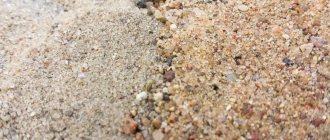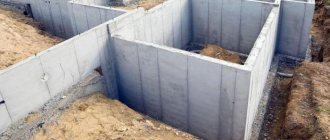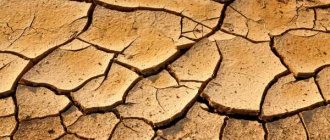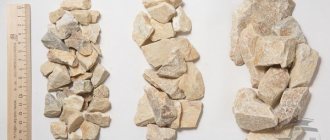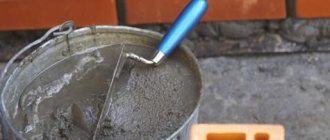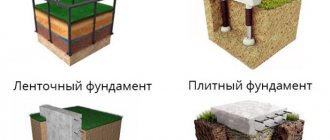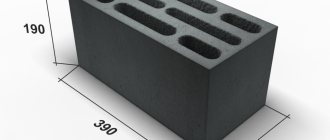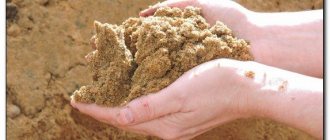Preparing a high-quality concrete mixture is a difficult task, without which no construction project can be completed.
The constituent ingredients of concrete are sand, cement, crushed stone and water. Each of them performs its own specific task, both when creating a concrete structure and when using it subsequently.
When preparing concrete, it is important to adhere to all the rules, use optimally suitable components and not deviate from the desired proportions.
Function of sand in concrete
Before deciding which sand is best to use when preparing concrete, you need to understand what task sand performs for concrete.
In concrete mortar, sand functions as a fine aggregate. It is designed to reduce internal stress during concrete hardening and make the structure more durable.
But the beneficial role of this substance for concrete is noted only when all the necessary requirements for its quality and quantity are met:
- If the volume of added sand is excessive, the resulting concrete will acquire a granular structure that is easy to destroy.
- If the quantity is insufficient, cracks will appear as the solution dries, and depressions may appear on the finished product.
What can be replaced
Sand is an important component of a high-quality cement mixture, but sometimes it can be replaced with other components. Fits good:
- Dropout The material is obtained after crushing rocks. In fact, it is artificial sand, and it is often used to prepare concrete due to its low cost.
- Sand and gravel. Sand is mixed with gravel naturally. There is often a lot of dust here, so it will not be possible to make high-quality concrete. However, if you need a solution for simple work, ASG is quite suitable.
- Sand-crushed stone mixture. This product contains screenings and crushed stone. The PSC is quite clean. This mixture is often added to concrete as the only aggregate.
If possible, it is better to use sand. It will better provide concrete with the required parameters and properties.
Types of sand
The composition and parameters of sand largely depend on the place of extraction. When choosing sand, it is important to know that there are river, sea, quartz and quarry sand for concrete.
Features of river sand
River grains have distinctly rounded grains; they are constantly washed by streams of water, making them smooth and polished. This is very important for preparing a high-quality solution, since the particles are distributed evenly and the density of the substance in the concrete can be adjusted.
When thinking about which sand is best for concrete, they often choose the river version, since it does not contain clay and there are almost no stones. Settlement into it is natural and occurs at a high speed, therefore, when using the river type to prepare concrete, it must be mixed all the time. The degree of sand clogging with silt and clay is indicated in the documents for it and cannot be higher than 0.3%.
But we must remember that river material, although not the most expensive, still exceeds the price of quarry material.
When thinking about what kind of sand is needed for concrete, you need to be aware of what is more important to you: the lower price of concrete or its higher strength.
Features of quarry mountain sand
Considering the parameters of quarry sand (mountain and ravine), it is usually used in the production of bricks, screed mixtures, fill for roads and playgrounds. Due to the irregular shape of the grains and clay additives, products using the quarry type are very strong with high internal bonding strength.
If you use the quarry option to prepare concrete, the solution will be of low quality. The grains of sand in it are very small with low plasticity, the substance itself in the solution is distributed unevenly and settles too quickly. The volume of clay additives is slightly reduced in the alluvial form of quarry origin, but it does not occupy an important place in the creation of concrete.
Due to the fact that clay additives and stones can be found in the quarry, it is only suitable for preparing backfill for foundations or concrete screeds.
In the preparation of concrete, the quarry type is also used, but only after it is washed with water, immediately after extraction. This procedure removes clay and dust particles.
Marine and quartz
By properties
sea sand
resembles a river one. Its main positive side is the uniformity of its composition. This option can be called the cleanest. Additional cleaning may be necessary due to the large amount of shells expected to be present. Due to constant washing with salty sea water, particles of this type have a regular shape and are all approximately the same size. Marine has the highest cost, since it is mined on the seabed at great depths and requires expensive technology.
Quartz sand
reproduced as a result of mechanical grinding of rocks containing quartz. This option is clean, chemically inactive, and all its grains are the same size and shape. Extraction is carried out artificially.
How to check the quality of sand
There are two ways to evaluate the characteristics and quality of a material:
- laboratory;
- using improvised methods.
Laboratory examination will give more accurate results: you will be able to find out not only the amount and composition of impurities, but their percentage in the total volume of the material. But expert assessment is expensive, and the process itself takes a lot of time. It is much easier to check sand for quality manually using available tools.
Manual verification method
Take a regular 1.5-2 liter plastic bottle. Pour sand into it to about a third of the total volume of the container, pour water on top to half the bottle. Shake thoroughly and leave to settle for 5-6 minutes. Then evaluate the clarity of the water:
- if there are foreign particles floating in the liquid, the sand is not suitable for use;
- the water is dirty and cloudy - the material contains a lot of foreign impurities;
- transparency and the absence of foreign elements indicate that you have in your hands a high-quality material suitable for use.
Properties and characteristics of sand
All necessary requirements for the quality of sand used in the preparation of concrete are documented. Some characteristics of this substance can only be studied in a laboratory, but there are some that are checked by eye immediately before construction.
Particle size
To know what kind of sand to use for preparing concrete, you first need to decide on one of the most important parameters of the material – the size of the sand grains. The following types of this substance are distinguished based on the size of its particles:
- consisting of large particles (grains of sand have a size exceeding 3.5 mm);
- increased fineness (sand grain size from 3 to 3.5 mm);
- large (within 2.5-3 mm);
- medium size (2-2.5 mm);
- fine fraction (1.5-2 mm);
- very small (1-1.5 mm);
- thin (0.7-1 mm);
- very thin (up to 0.7 mm).
To find out the size of sand grains, specialists pass the substance through a sieve with the appropriate hole diameter.
In fact, such a division is more conditional, only documented.
In real life, there are 3 types of sand based on particle size: small, medium-sized and with large fractions.
What kind of sand is used when preparing concrete mortar? To make the structure really strong, you need a large type, but it needs to have a lot of small grains of sand in it.
Otherwise, there will be a huge number of voids in the concrete, which can reduce the strength of the finished structure. In addition, the resulting voids can be filled with cement, which equals an increase in the cost of the finished product. It is an irrefutable fact that particles of the same size do not fit tightly together, thus the number of voids is much greater. Based on this, a mixture of sand with different sizes of sand grains is mainly used in order to achieve maximum density between the components of concrete.
Based on the size of sand grains, the substance itself can be divided into 2 classes. In the first class there are no particles whose diameter is below 1.5 mm. This is the optimal material for construction, because the presence of such fine aggregate has a negative effect on the settlement of larger grains of sand. The second class is characterized by the presence of small particles.
Volume weight
This indicator characterizes the weight of 1 m³ of sand in its natural state. Typically, the weight of a cubic meter of this element is approximately 1.5 -1.8 tons. It is desirable that this figure be lower.
Compound
According to its constituent elements, sand is divided into:
- Granulometric (combines the combination of sand grains of different sizes).
- Mineral: quartz, dolomite, feldspathic and limestone.
- Chemical (in accordance with the components present in the composition, the intended scope of application is determined).
Humidity
Typically, this figure is 5%. If the substance is dried, its moisture content will be 1%; if moisture is added in the form of precipitation, it will be 10%. Humidity determines the amount of water that must be added to the concrete mixture.
Immediately before use, you can independently control the moisture level of the sand. If you squeeze it with your palm and it crumbles, therefore the humidity is optimal; if not, then its value is more than 5%. But it is better to check this characteristic in a laboratory.
Porosity coefficient and bulk density
The coefficient characterizes how sand, and then concrete, can resist the passage of moisture. This coefficient is checked only in the laboratory.
On average, the optimal density should be kept at 1.3 - 1.9 t/cub.m. If the indicator is lower, this indicates that the substance contains unnecessary additives; if it is higher, this indicates high humidity. All information must be submitted in the appropriate documentation.
Concrete proportions
To make artificial stone products, use a standard recipe. The best way to measure components is to use a bucket. The mixture is prepared from one part cement, 3 sand and 5 crushed stone. Water is added in an amount of 50% of the volume of the cement component. Experienced specialists prefer to prepare sand concrete concrete mortar from a ready-made mixture sold in a hardware store. The components in the package are mixed in accordance with GOST requirements and have high-quality fillers.
Quantity calculation
In order for the grade of concrete to be high, it is necessary to comply with the requirements for the use of all its components. Often, a ratio of 1:3:5 is used, which means cement, sand and crushed stone, respectively. Water is added little by little in the amount of 50-70% of the total weight of cement. But to prepare high-quality concrete for the construction of high-rise buildings or load-bearing floor slabs, it is extremely important to maintain accurate calculations.
To correctly calculate the proportions of all components, follow these recommendations:
- to prepare concrete grade 100, use sand with grains of sand with a diameter of no more than 2.5 mm in a ratio of 1: 7: 4.6 (cement, crushed stone, sand, respectively);
- for brand 150 – proportions 1:5.7:3.5;
- for 200 - 1:4.8:2.8;
- for 300 – 1:3.7:1.9;
- for grades higher than 400 and 450, sand particles over 3.5 mm are used, the proportions will be 1: 2.7: 1.2 and 1: 2.5: 1.1.
Often, the necessary attention is not paid to the importance of fine sand in concrete mortar. But in vain, since by correctly choosing this element and calculating its weight in the solution, you can reduce the price of concrete (by reducing cement consumption), increase its strength and grade.
To create a high-quality solution, it is optimal to use coarse river sand, but with a considerable number of small particles. It is also planned to add a washed quarry type, which, by using it, can significantly reduce the cost of concrete. But we must not forget that if you overdo it with savings, the strength and stability of concrete products can significantly deviate from high values.
How to choose a material for working with concrete?
Quarry sand is used in construction only after cleaning, otherwise the presence of substances in the composition will lead to cracks in the concrete.
Most often, river sand is used to prepare concrete mixtures. This is due to its purity and availability. To reduce the cost of the material, it is mixed with quarry material, purified from impurities. Sand with clay or organic substances leads to concrete losing its strength and frost resistance. The presence of gypsum, pyrite or sulfur in sand causes cracks to appear, so quarry-type building materials are used only after cleaning.
What is included in concrete? What additives are used?
Novik E.V .:
Yes, additives in the composition are desirable. Although 20–30 years ago, when they did not yet exist, houses were built using simple concrete. And nothing - they stand to this day, nothing cracks. This is because they mixed and placed correctly.
Let's say, frost-resistant additives are generally the norm for our latitudes, since in our country cold weather is possible from November to April - in fact, half a year. If we highlight a certain “top” of additives, then these are:
– plasticizers and superplasticizers;
–additives that slow down setting (with a long concrete transportation distance);
– accelerating hardening (if you need to obtain a given strength quickly);
– anti-frost;
– fibers (mostly steel). As a rule, they are used when pouring floors.
Protko N. S .:
In addition to the main components of concrete - cement, sand, crushed stone and water - in the production of modern concrete, many additives are used that give the material certain additional properties: plasticizing, antifreeze, air-entraining, hardening accelerators, colmatizing, etc.
Among the additives used, the most common is the use of plasticizers. The additive allows you to increase the mobility of the concrete mixture, and with a decrease in water consumption, it can increase the strength of concrete or save cement. If in the industrial production of concrete mixtures, depending on the tasks, a wide range of plasticizers with different effectiveness can be used, then in the production of concrete on a construction site it is recommended to use inexpensive naphthalene-based plasticizers, since concrete mixtures do not require increased shelf life, and the additives have a high plasticizing effect.
In individual construction, it may be necessary to use antifreeze additives, preferably for concreting and subsequent hardening of concrete at a temperature not lower than –5 degrees. The content of antifreeze additives in concrete depends on the composition of the concrete, the temperature of use, the characteristics of the additive and should be established taking into account the recommendations of their manufacturer.
It is interesting to use bridging additives, i.e. additives, the use of which increases the water resistance of concrete already at the stage of its operation. For example, it is possible to obtain concrete W10 and higher with a water-cement ratio of 0.55 and a cement consumption of 350 kg/m3.
It is also interesting to consider the use of polymer fiber in individual construction, for example, when installing floors to reduce cracking.
Concrete mixer - this is where all the components of concrete are mixed.
How much concrete is needed for a particular job/structure?
(how to correctly calculate the amount of concrete?).
Novik E.V .:
The order is made based on the functional purpose of the structure for which concrete is purchased, and design data for its class (grade). As a rule, the amount of solution is calculated based on the size of the structure that needs to be filled. Roughly speaking, we multiply its area by its height. But there are nuances here. For example, large developers, when pouring the foundation, use very precisely calculated steel formwork, the internal dimensions of which are carefully verified. Individual developers often use boards of different thicknesses and fasten them in different ways, so the internal volume can “play.” This needs to be taken into account. It is also worth taking a small reserve for shrinkage, which occurs with any concrete during transportation and installation.
In projects, the amount of concrete can be calculated by weight, but we still load by volume. If we talk about very small volumes, such as pouring a floor in a garage or a screed in a room, then, as a rule, a cement screed is made, not a concrete screed (mortar without the use of crushed stone). Here we can recommend the proportions of cement to sand 1:4 or 1:5. In general, it is better to take a small supply of cement. It is always better to add more cement than water - the result will be stronger.
Protko N. S .:
The answer to this question directly depends on where exactly you are going to use concrete and for what work. Regardless of whether it is industrial construction, civil or individual development, there must be a project. It will indicate the volume of concrete or mortar, which can be approximately clarified taking into account the volume occupied by reinforcement, etc.
It is more difficult when a solution or pre-fabricated fine-grained concrete is ordered, i.e. a low-flow mixture with incomplete mixing water. In this case, you need to know that the actual volume of concrete or mortar will depend on the amount of water added (it must be indicated in the manufacturer's accompanying document) and compaction conditions. These mixtures are delivered on dump trucks, and it must be taken into account that the volume of the mixture in the dump truck, due to its loose packing, may be higher than the actual volume obtained after adding the required amount of water. Determination of the yield of concrete during its production under construction conditions (dosing of components by volume), in liters, can be established factually or by calculation as the sum of the quotients of dividing the weight of materials in kilograms by their true densities (for cement - by 3.1, sand - by 2.65, water - by 1). When establishing water consumption, its content in wet sand should be taken into account (sand moisture content can be 3–5%).
Conveyor for feeding suspended materials into a concrete mixer - view from the outside (left) and from the inside (right).
How to estimate sand moisture content
The optimal humidity for sand varies from 1 to 5%. Calculating the amount of moisture in a material is quite simple: try making a lump out of it. If the humidity percentage does not exceed the norm, you will not succeed; the sand will simply crumble in your hands.
A more accurate estimate of humidity can be obtained using a handy metal container:
- weigh the container;
- place 1 kg of sand in it and take measurements again;
- place the filled container on the stove or low heat;
- heat it for half an hour;
- weigh the sand.
Formula for determining the reliable mass of humidity: subtract the mass of the tank divided by 100 from the weight of the heated sand.
The exact moisture content of a material can also be determined by comparing wet and dry samples. It is necessary to weigh the same amount of material in normal and dried states. Then subtract the weight of dry sand from the weight of wet sand and divide by 5.
